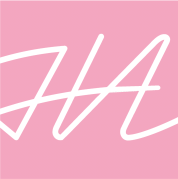What went well?
Activism Project: Our research and idea generation went well as we all seemed to be on the same page of what we wanted visually and textually. All of us had suggestions to consider and we were very quick in establishing and agreeing on ideas. As a group, we covered all grounds of details and specifications on all aspects of the campaign right at the beginning of the process. We had made a clear distribution of work which everyone stuck to.
Protest Project (groping): We had all established our strengths and weaknesses early on in the process in order to understand what work would be given to who. We were quick when making final decisions of ideas.
Protest Project (Mental Health): Our communication and work ethic was excellent. All were willing to meet up after hours for brainstorming and idea generation which gave us all a constant clear idea of what each of us was doing work wise. We had established and selected ideas quickly which meant that we were able to get on with our work as soon as possible. The group had a nice friendly atmosphere and were willing to get involved and send information whenever needed.
What did I learn?
After both projects, I have learnt that communication is key. If no communication is made the whole group becomes confused on design aspects and the work seems inconsistent. Communication means that everyone in the group brings forward their own ideas and suggestions otherwise the workload becomes very one-sided. It is also important that everyone is on board with the decisions made and that they are willing to go out their way to meet up and take part. Meeting up also helps with ensuring consistency.
What didn’t go as well as expected?
Activism Project: Even though we communicated, I believe we could’ve done it better. If not in university the group chat we had made was quite quiet and could’ve been quicker with replies and more straight forward with answers. We should’ve been sending constant updates of our work through images in order to ensure consistency. Also, sending work could’ve been quicker.
Protest Project (groping): The communication was lacking hard as most of the time it felt that I and Anna were the only ones sending work and discussing it. I also felt that a lot of the idea generation was mine as the group didn’t really suggest a lot and would remain quiet. Work was missing form some people and could’ve been sent a lot quicker and should’ve been shown for updates. A lot of the time I felt in the dark as I never knew what anyone was doing apart from Anna which was disappointing.
What would I do differently next time?
Next time I would ensure that everyone understands that communicating is key and that updates on work need to be made continuously. Meet ups need to happen more often in order for the group to remain on the same page throughout. I also believe that I could’ve played around more with my sketches.
How did I use my skills to contribute?
I used my skills of idea generating consistently throughout each of the projects. It is one of my strongest skills as I am able to create a variation of visual ideas. I believe I am friendly and communicate well, making sure that everyone feels comfortable with their workload and the ideas that are selected. I make sure to update people on the work that I have done to avoid confusion. I make sure to send my work on time so the other members aren’t seeing it last minute or late at night. I arrive at meet ups on time and attend unless ill.
Did I attend, engage and commit fully to my project?
My attendance was good and I made sure to attend all the meet ups arranged out of hours. I made sure to engage fully with my group and also with the work ensuring that they were completed on time and efficiently. I was passionate about all projects I was involved with and so it gave me a better work ethic. I made sure to do the work we had all agreed on in order to avoid confusion and keep consistency.
How has the process helped me to develop as a designer?
As a designer, I am more aware of what is required of a team when involved in a group task. I now know the key elements to achieve a successful outcome and how to distribute work. I have also learnt that everyone has a different style and that it’s important to alter your work when combining it with others to keep consistency. My designs have more thought and context behind them.
How did I consider the audience, tone and communication of the project?
Throughout both projects, I ensured that the work I created would appear clear and thoughtful for the audience. Giving the work understandable messages with context and visual metaphors. As some of our topics were sensitive i.e. organ donation, groping, mental health, I wanted to approach them sensitively and professionally with the audience’s feelings and opinions in mind. I also did this with the visuals used as I didn’t want to create any negativity.






















































